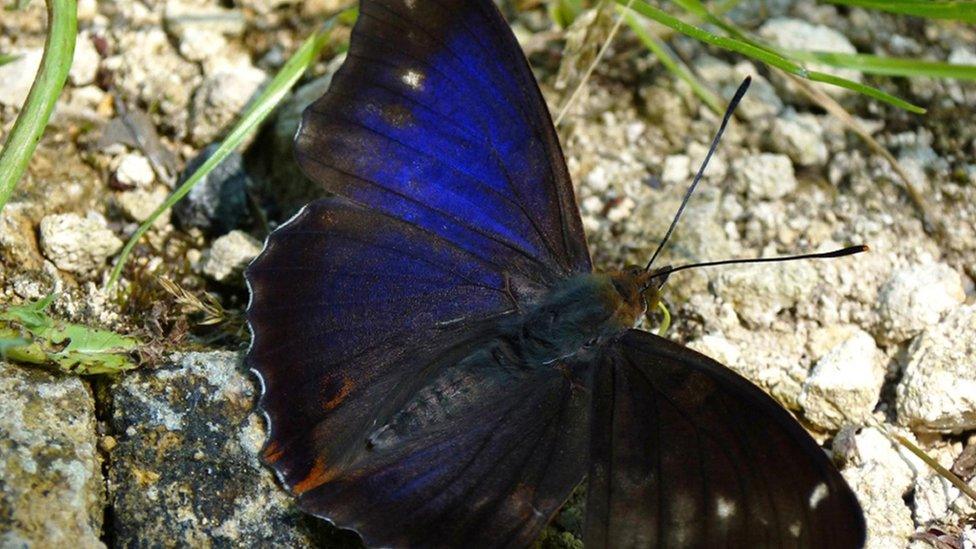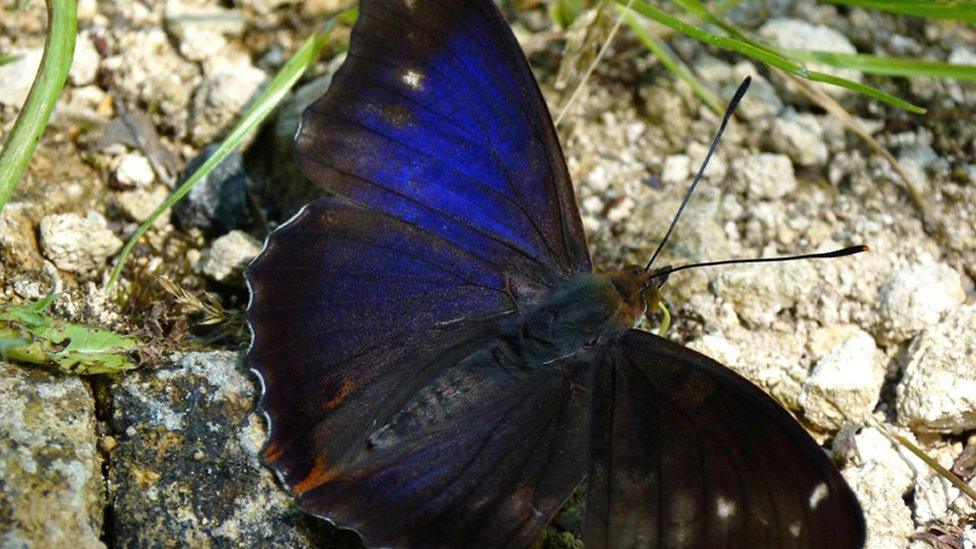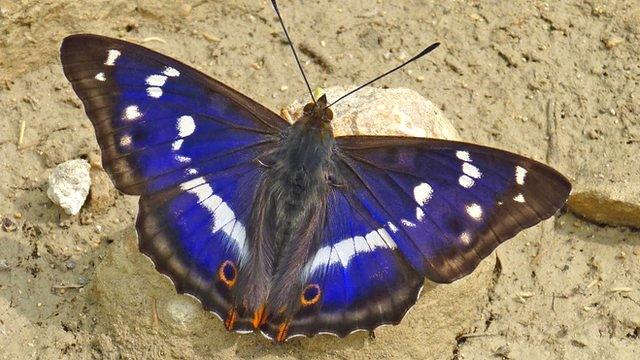Tree planting aims to attract 'iconic' purple emperor butterfly
- Published

The male purple emperor butterfly boasts an iridescent colour on its wings, while the females are brown
Hundreds of trees will be planted in Derbyshire to try to attract one of Britain's largest butterflies to the area for the first time.
Goat willow trees are being planted because the "iconic" purple emperor butterfly uses them as a habitat.
The purple emperor is often found in southern England but conservationists hope it will head north.
The first trees were planted at the Rosliston Forestry Centre, near Swadlincote, on Thursday.
The East Midlands branch of the Butterfly Conservation charity and South Derbyshire District Council are working with the National Forest Company on the initiative.

The first of 550 trees are planted at Rosliston
A total of 550 two-year-old goat willow trees have been purchased for the project.
The council said they would be planted at Forestry England sites, the National Trust's Calke Abbey and Foremark sites, and the Staunton Harold estate.
The University of Derby, Derby College and several companies are also backing the scheme.
The council said, external it could take up to five years before the willow trees would be large enough for the female purple emperor to make use of them as an egg-laying plant.
Butterfly Conservation's Ken Orpe said: "The purple emperor is one of the most iconic British butterflies we have.
"With the planting of trees across Derbyshire, the support from the group and members of the public, we are extremely hopeful that 'his imperial majesty' will grace our woodlands for the first time very soon."

Follow BBC East Midlands on Facebook, external, on X, external, or on Instagram, external. Send your story ideas to eastmidsnews@bbc.co.uk, external.
Related topics
- Published1 August 2018

- Published23 July 2015

- Published22 July 2015
